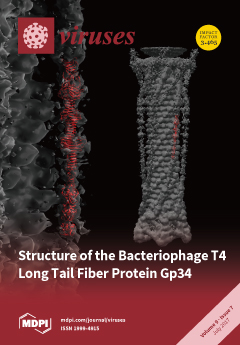1
Institute for Molecular Virology, D.D.S.-Ph.D. Dual Degree Program, University of Minnesota, Minneapolis, MN 55455, USA
2
Institute for Molecular Virology, Institute for Molecular Virology Training Program, School of Physics & Astronomy, University of Minnesota, Minneapolis, MN 55455, USA
3
Institute for Molecular Virology, Department of Diagnostic and Biological Sciences, School of Dentistry, University of Minnesota, Minneapolis, MN 55455, USA
4
Institute for Molecular Virology, Department of Biomedical Engineering, University of Minnesota, Minneapolis, MN 55455, USA
5
Institute for Molecular Virology, Department of Diagnostic and Biological Sciences, School of Dentistry, Characterization Facility, College of Science and Engineering, Masonic Cancer Center, University of Minnesota, Minneapolis, MN 55455, USA
6
Institute for Molecular Virology, School of Physics & Astronomy, Masonic Cancer Center, University of Minnesota, Minneapolis, MN 55455, USA
7
Institute for Molecular Virology, Division of Basic Sciences, School of Dentistry, Masonic Cancer Center, University of Minnesota, Minneapolis, MN 55455, USA
†
These authors contributed equally to this work.






